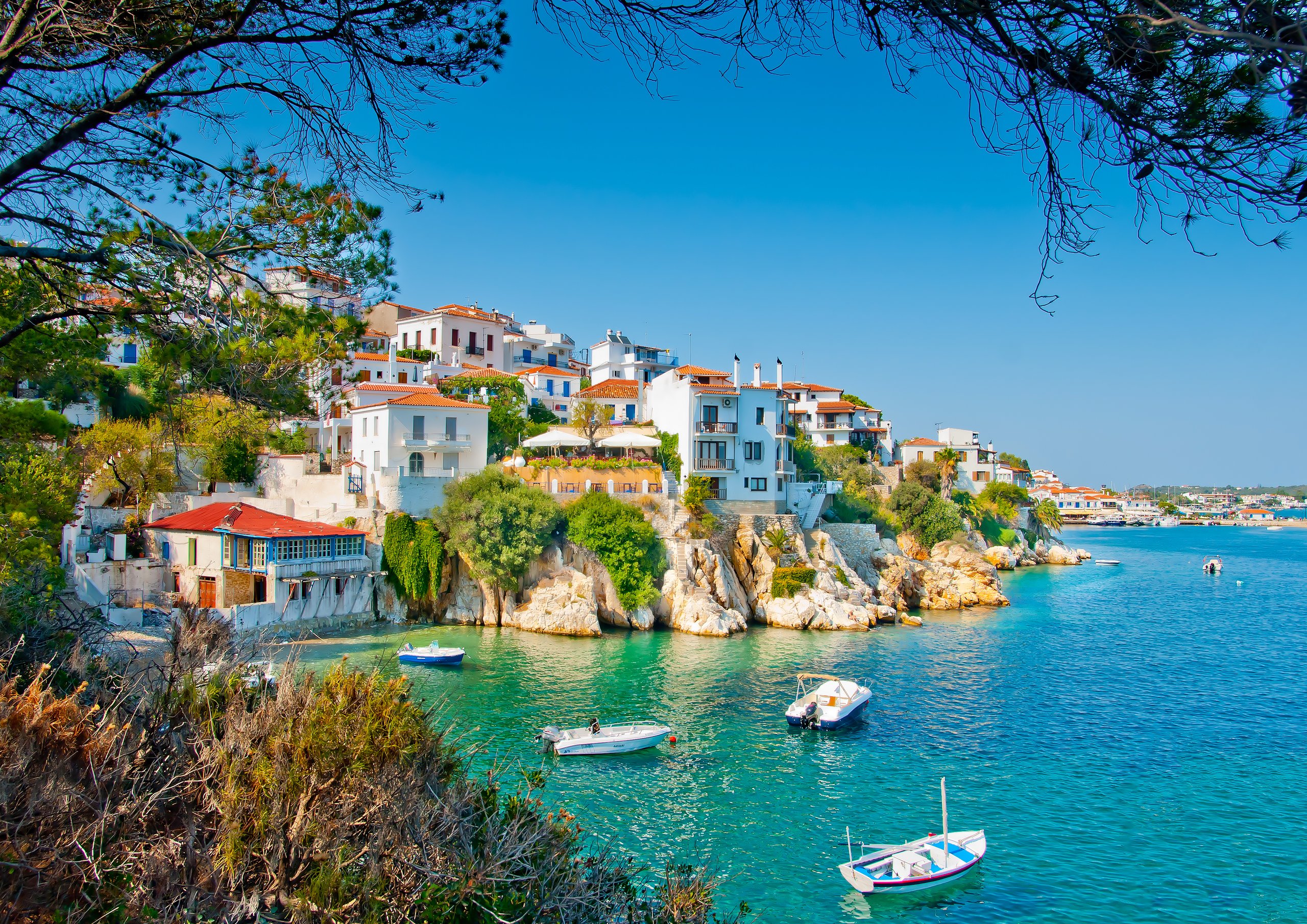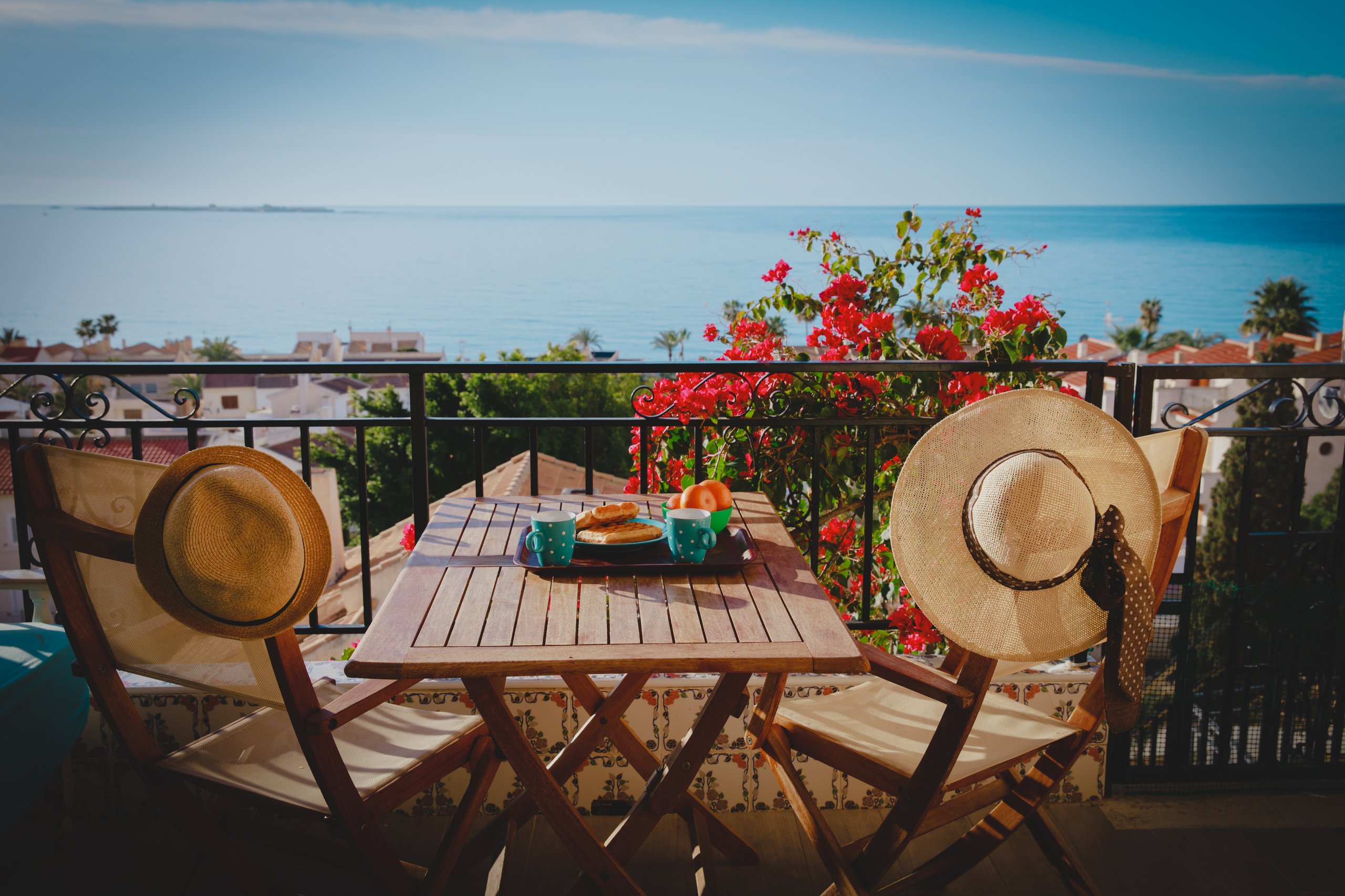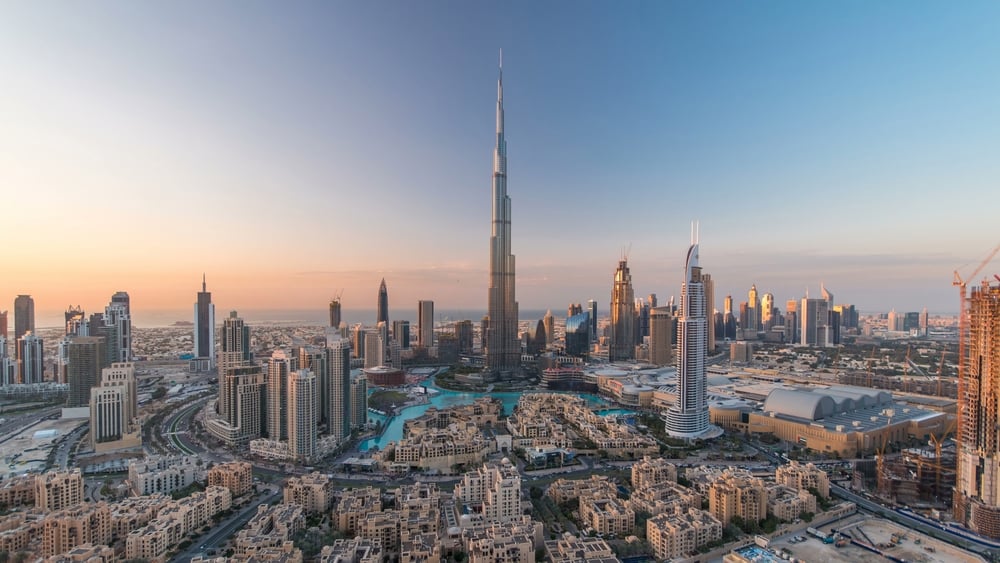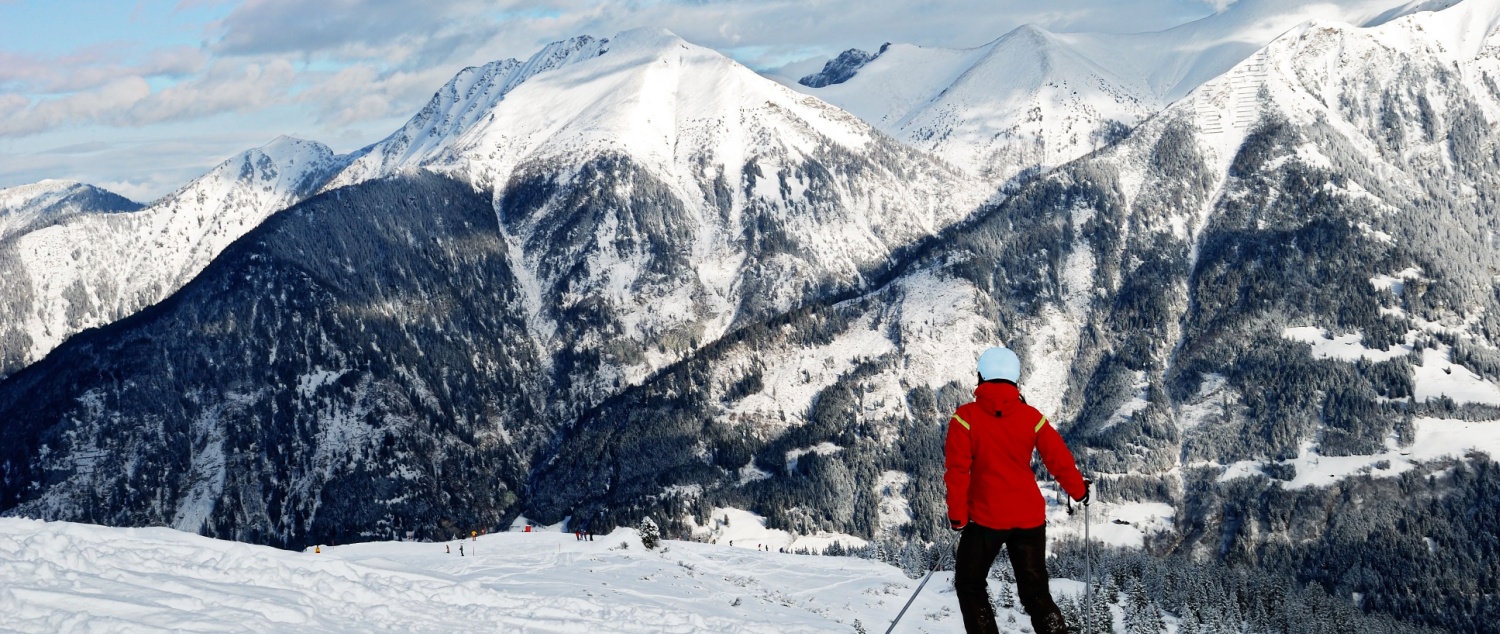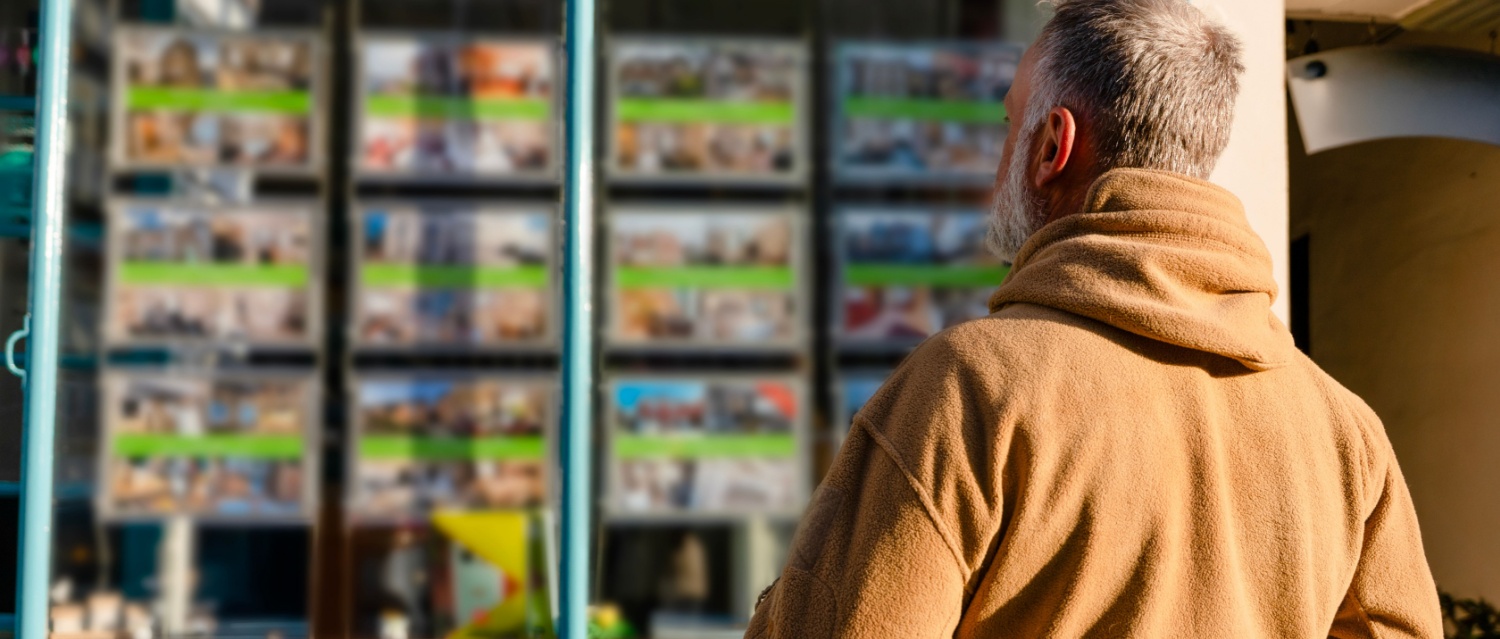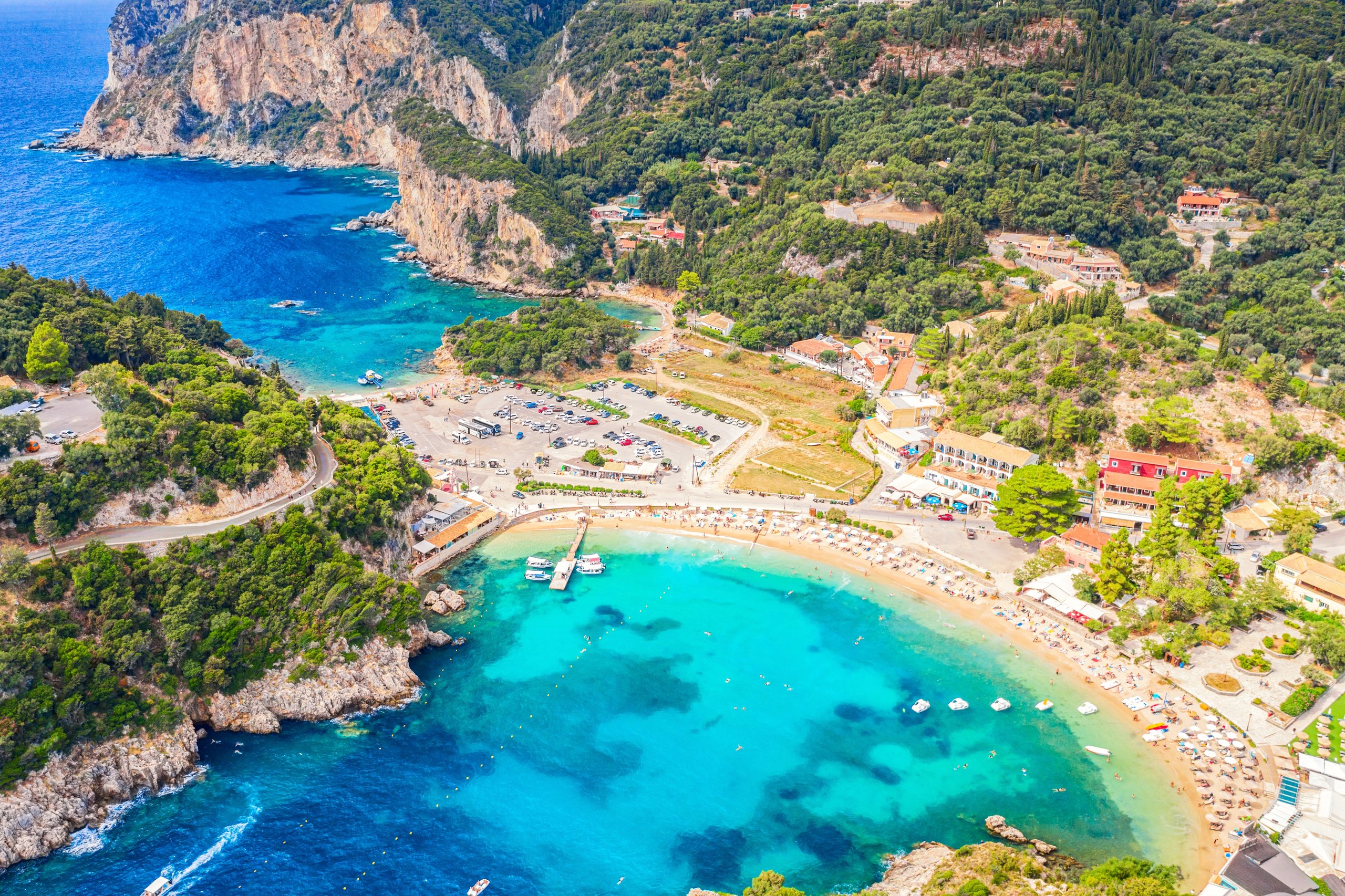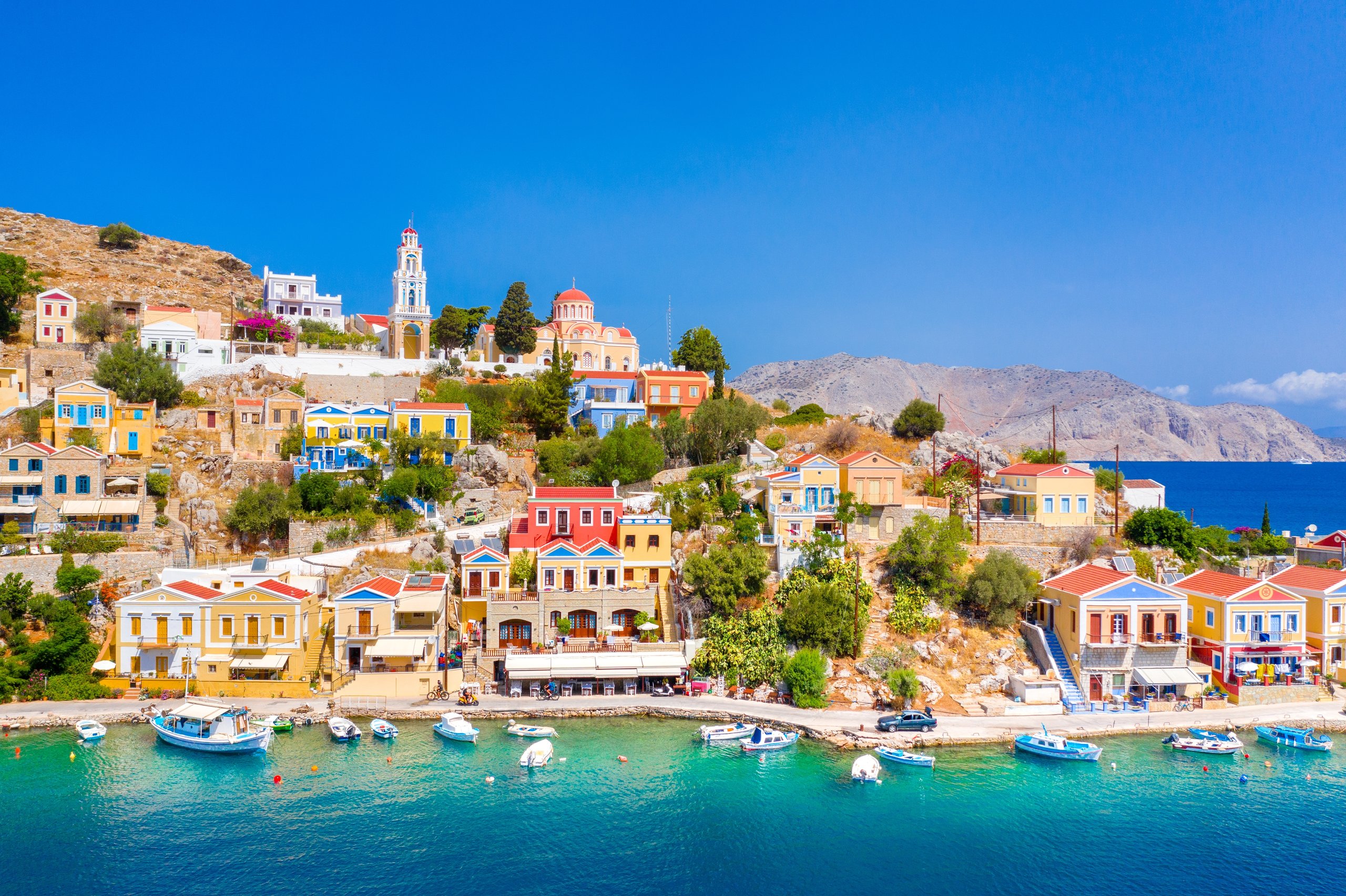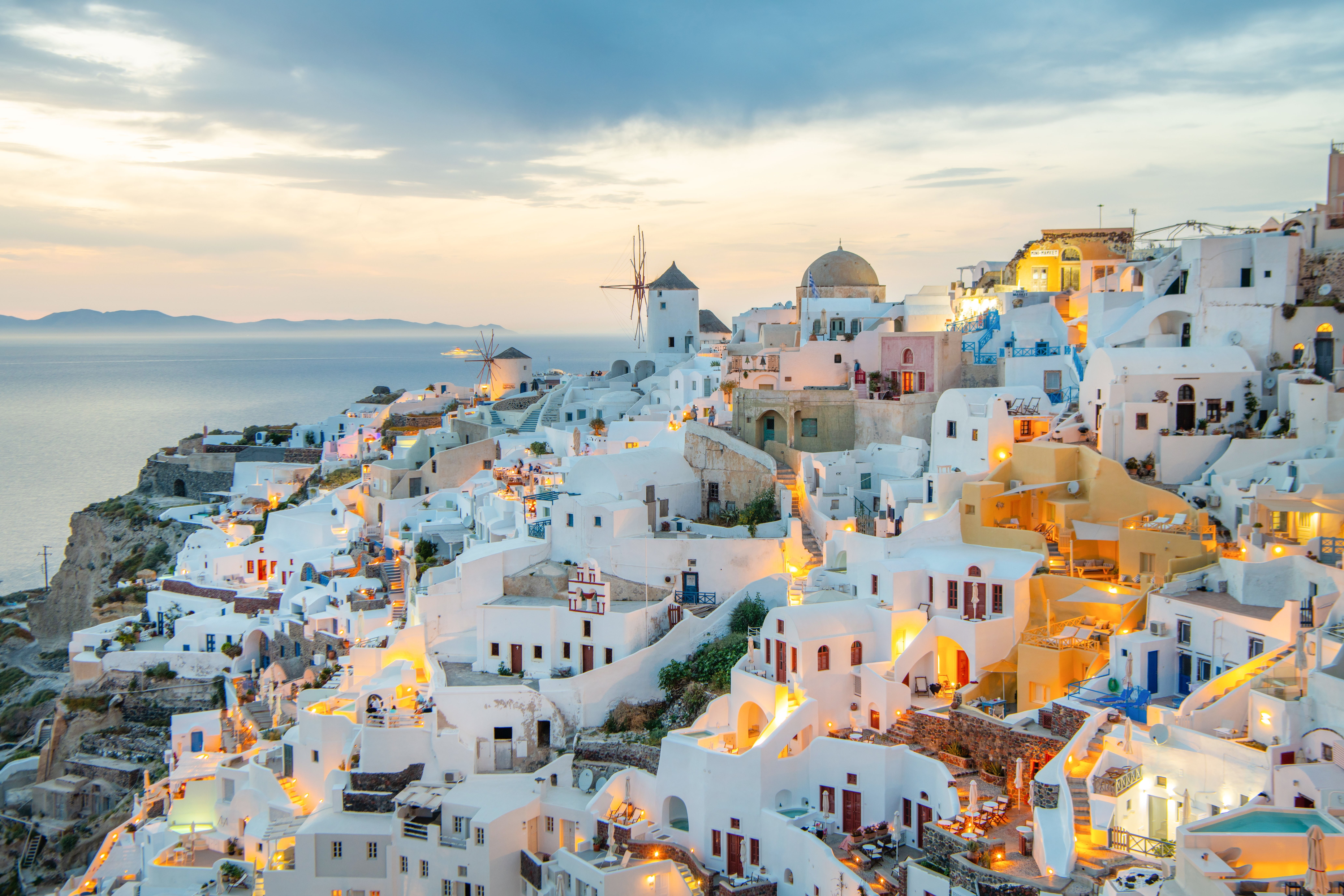Set high in the Tarentaise Valley in Savoie, La Plagne is one of the most popular ski resorts in the world – and for good reason. Part of the vast Paradiski ski domain, which links to Les Arcs via the double-decker Vanoise Express, buying property in La Plagne offers more than 400km of interconnected pistes, consistent snow, and varied terrain to suit all levels. But there’s more to this resort than skiing. With eleven diverse villages, excellent infrastructure, and a growing dual-season offering, La Plagne has evolved into a vibrant mountain destination that appeals to investors, second-home buyers, and outdoor enthusiasts alike.
The area’s long-term popularity is underpinned by smart investment. The resort is continuing to upgrade its lift systems, invest in sustainability initiatives, and preserve its natural landscape – including the landmark decision to rewild the Chiaupe glacier. Add in strong accessibility by train and air, and you have a resort with broad appeal and excellent long-term potential.
Whether you’re looking for a ski-in/ski-out apartment, a traditional chalet with year-round charm, or a high-yield rental investment, La Plagne delivers on every front.
Contents
- Why you should be buying property in La Plagne
- Property types and what you can get for your money
- Best places to buy in La Plagne
- Skiing in La Plagne
- La Plagne in summer
- Dining and après-ski in La Plagne
- How to buy property in La Plagne
- Ownership costs and ongoing expenses
- Frequently asked questions

Why you should be buying property in La Plagne
La Plagne’s visitor numbers speak for themselves. With more than 2.5 million skiers passing through each season, it consistently ranks as the most visited ski resort in the world. That level of demand translates into reliable rental income – particularly for ski-in/ski-out apartments in central villages like Plagne Centre and Belle Plagne, where occupancy is strong throughout the winter.
But this isn’t just a winter destination. La Plagne has worked hard to build its dual-season appeal. The surrounding mountains and national parks transform into a haven for hikers, mountain bikers, and water sports enthusiasts during the summer months. Wellness centres, spas, and family-focused activities keep visitors coming back even when the snow melts. If you’re looking to maximise usage of your ski home all year round, this is a destination that delivers.
Another key selling point is accessibility. Aime-La Plagne is served by direct trains from Paris and Lyon, and nearby airports in Geneva, Lyon, and Chambéry make international travel surprisingly straightforward. If you’re thinking of taking the train to your Alpine home – or attracting guests who will – La Plagne is one of the easiest high-altitude resorts to reach.
Thanks to its diverse villages, strong tourism economy, and excellent infrastructure, La Plagne combines the reliability of a world-class ski resort with the flexibility of a four-season mountain lifestyle. Whether you’re investing for rental income or personal use, it’s a resort that offers both short-term enjoyment and long-term value.
Property types and what you can get for your money
With eleven interconnected villages and a mix of purpose-built and traditional communities, La Plagne offers a wide variety of ski properties to suit different budgets, styles, and investment goals. Most homes here fall into one of three categories: modern ski-in/ski-out apartments, traditional chalets, and off-plan or newly built residences with high-end finishes.
Central villages like Plagne Centre, Belle Plagne, and Aime-La Plagne are dominated by ski-in/ski-out apartments. These are ideal for rental income, as they tend to be compact, easy to manage, and in high demand throughout the season. Prices for a one-bedroom apartment typically start from €220,000–€250,000, while two-bedroom units can range from €300,000–€400,000 depending on location, condition, and access to lifts.
In quieter, lower-altitude villages such as Montchavin, Les Coches, and Plagne 1800, you’ll find more traditional chalets, some of which are full-time residences rather than holiday lets. Prices here vary depending on size and renovation status, but buyers can expect to pay upwards of €500,000 for a three-bedroom chalet. These properties often include balconies or terraces, exposed beams, and mountain views – ideal for those looking for a second home with character.
If you’re after something brand new, off-plan developments are increasingly available in high-demand villages. These offer modern design, energy-efficient construction, and customisation options, making them especially appealing to international buyers. You’ll pay a premium for new-build properties, but VAT rebates and low maintenance costs can help balance the upfront investment.
Prices across La Plagne remain relatively competitive compared to elite resorts like Courchevel or Val d’Isère – but as one of the world’s busiest ski destinations, rental yields here are among the strongest in the Alps. You can learn more about French ski investment returns in our guide to property investment in France.
Regardless of your budget, it’s important to factor in additional purchase costs and exchange rates when buying. For a full breakdown, see our guide to the costs of buying in France or speak to a currency specialist before you put in an offer.

Best places for buying property in La Plagne
La Plagne’s eleven villages each offer a different lifestyle – and different opportunities for buyers. From purpose-built ski hubs to traditional Savoyard hamlets, there’s a location here for every kind of buyer, whether you’re focused on rental yield, family convenience, or long-term enjoyment.
Plagne Centre and Aime-La Plagne sit at the heart of the resort and are ideal for buyers seeking convenience and strong returns. These central hubs offer direct access to ski lifts, shops, restaurants, and ski schools, making them popular with both holidaymakers and rental clients. Properties here are typically ski-in/ski-out apartments, and the high-altitude setting ensures reliable snow from December through April.
Belle Plagne and Plagne Bellecôte are also high-altitude and snow-sure, but with a more traditional alpine aesthetic. Belle Plagne, in particular, is known for its chalet-style buildings and pedestrian-friendly layout. It’s popular with families and those seeking a more picturesque, quieter alternative to the central resorts – but with all the skiing access you need.
Plagne 1800 is a charming choice for second-home buyers. Once a mining village, it now features a mix of chalets and small apartment buildings surrounded by trees and quieter pistes. It’s a peaceful retreat that feels residential rather than touristy – a good option if you’re looking to escape the crowds.
Montchavin and Les Coches lie at lower altitudes but retain excellent lift access and offer a more village-like experience. Traditional farmhouses, cobbled streets, and independent shops give these villages a lived-in feel. These are great areas for buyers who want a family-friendly atmosphere with year-round appeal, as the forested setting is especially beautiful in summer.
Champagny-en-Vanoise stands apart from the rest of the resort – both geographically and stylistically. Located on the southern edge of the Paradiski area, it enjoys a sunnier microclimate and acts as a gateway to the Vanoise National Park. With its traditional architecture and hiking access, Champagny is particularly appealing to buyers who value dual-seasonality.
If you’re still narrowing down your options, our guide to choosing the perfect location in France offers advice on weighing lifestyle, budget, and investment potential.
Skiing in La Plagne
La Plagne offers some of the most diverse and snow-sure skiing in the French Alps. As part of the vast Paradiski area, which connects to Les Arcs via the iconic double-decker Vanoise Express, skiers here can access over 425km of pistes – making it one of the largest ski domains in the world.
The terrain is well-suited to every ability level. Beginners will find wide, gentle green and blue runs close to the main villages, while intermediates have a broad selection of long, well-groomed red pistes. Advanced skiers can tackle steeper black runs and extensive off-piste zones, particularly around the Bellecôte glacier, which reaches 3,250m and features the famous North Face descent – a challenging route known across the Alps for its technical demands and breathtaking views.
Lift infrastructure is modern and efficient, with high-speed chairlifts and gondolas ensuring smooth access across the resort. Ongoing upgrades help reduce bottlenecks during peak periods, and many areas offer ski-in/ski-out access, depending on snow conditions and altitude.
For freestyle skiers and snowboarders, the resort features dedicated snowparks, boardercross tracks, and halfpipes, while timed slalom courses and mogul fields provide variety for more competitive guests. La Plagne’s ski schools are also highly regarded, offering beginner lessons, off-piste guiding, and tailored instruction for children and adults.
Snow reliability is one of La Plagne’s greatest strengths. Many of the pistes sit above 2,000m, and a large portion of the resort faces north, helping preserve snow quality throughout the season. Artificial snowmaking covers the lower slopes, so skiing remains possible even during lighter winters.
Increasingly, the resort is investing in sustainability, with several initiatives in place to protect its mountain environment. The decision to rewild the Chiaupe glacier is one such move, aiming to reduce human impact while securing the region’s long-term future as a high-altitude destination.
To learn more about high-performance ski resorts and what to look for when investing, see our guide to why luxury ski chalets are in such high demand.

Buying property in La Plagne isn’t only about winter
While La Plagne is best known for skiing, its appeal doesn’t melt with the snow. In the warmer months, the resort transforms into a playground for hikers, cyclists, and nature lovers – making it a true dual-season destination. This added dimension not only enhances your lifestyle as a second-home owner but also improves your chances of generating rental income beyond the winter season.
The surrounding mountains and forests are laced with well-marked hiking trails that lead through alpine meadows, panoramic ridgelines, and tranquil lakes. Whether you want gentle walks or high-altitude climbs, you’ll find routes for all abilities – many starting right from the village. Guided walks are also available, especially within the nearby Vanoise National Park, which is a haven for wildlife and rare alpine flora.
For thrill-seekers, mountain biking is a major draw. The resort has invested heavily in downhill and enduro trails, with lift-assisted bike parks and rental shops catering to all levels. In addition, paragliding, canyoning, and white-water rafting on the nearby Isère River add even more variety for active visitors.
If you’re after something more relaxing, Belle Plagne is home to several wellness spas and thermal centres, many of which are open to the public even if you’re not staying at a hotel. Hot tubs with mountain views, saunas, and massage therapies offer a chance to unwind and recharge in spectacular surroundings.
The longer daylight hours and warm, dry climate of the Tarentaise Valley also make La Plagne a popular base for summer holidays – particularly for families and couples looking for a mix of activity and peace. This boosts rental potential well beyond the ski season, especially in villages that offer true dual seasonality.
Unlike some ski resorts that shut down in April, La Plagne has committed to year-round tourism, with events, festivals, and outdoor markets bringing the community together long after the last lift has closed. If you’re thinking about how much use you’ll get from your property, this is a major advantage – whether you plan to visit in summer yourself or rent it out.
Dining and après-ski after buying property in La Plagne
After a day on the slopes – or hiking trails – La Plagne’s dining and après-ski scene makes it easy to unwind. With a mix of Savoyard restaurants, family-run bistros, and lively bars across the resort’s eleven villages, there’s something to suit every taste and budget.
In the main hubs like Plagne Centre, Belle Plagne, and Aime-La Plagne, you’ll find a great range of restaurants serving local alpine favourites. Fondue, raclette, tartiflette and other comforting specialities are a staple at venues like Le Mouflon or L’Auberge des Balcons, where roaring fires and wood-clad interiors set the tone for a cosy, authentic evening.
Those after a more casual bite will find plenty of relaxed eateries offering gourmet burgers, pizza, and mountain tapas – ideal for a quick stop between runs or a relaxed meal with friends. And if you’re staying in one of the resort’s quieter villages like Plagne 1800 or Montchavin, you’ll still find family-run restaurants with excellent menus and personal service.
When the sun sets, the resort’s après-ski comes to life. Bars like La Mine, Le Bonnet, and Le Brix are popular for their cocktails, craft beers, and regular live music or DJ sets. Some venues sit slope-side, meaning you can ski straight in for a celebratory drink as the lifts close. Others offer more intimate lounges with fireside seating and a laid-back vibe – perfect for winding down after a long day outdoors.
La Plagne is not about wild nightlife – you’ll find that scene more in resorts like Val Thorens – but its après-ski is sociable, fun, and varied. It’s an important part of the lifestyle that comes with owning a property here, and a factor many buyers appreciate when hosting friends or renting to holidaymakers.
For food-lovers, the wider region is also worth exploring. The Tarentaise Valley is home to some of the finest mountain restaurants in Europe, including Michelin-starred venues in nearby Courchevel and Megève – all easily reached for a special evening out.
How to buy property in La Plagne
Buying property in La Plagne follows the same legal process as elsewhere in France, but there are some specifics to consider when buying in a ski resort – especially if you’re purchasing in a co-owned development or planning to rent your home.
Step 1: Define your goals
Before starting your search, consider what kind of property you’re looking for. Are you seeking a ski-in/ski-out apartment for short holiday lets, or a traditional chalet for long-term use? Do you want to maximise rental income or enjoy a second home with occasional personal use? La Plagne’s eleven villages each offer a different experience – explore them in detail here.
Step 2: Speak to local experts
Work with a trusted property advisor who specialises in Alpine real estate. They’ll help you navigate the fast-moving market and ensure you see the right listings – whether that’s off-plan opportunities, resale apartments, or land to build on. Our team can introduce you to experienced, English-speaking agents in La Plagne.
Step 3: Arrange your finances
If you plan to take out a mortgage in France, it’s wise to speak to a mortgage broker before placing an offer. French banks will usually lend up to 70–80% of the purchase price, but you’ll need to provide proof of income and a deposit. If you’re buying in euros but earning in another currency, consider securing a forward contract with a currency specialist to lock in your exchange rate.
Step 4: Make an offer
Once you’ve found the right property, your agent will help you make a formal offer. If accepted, you’ll sign a preliminary sales contract (the compromis de vente), usually within 1–2 weeks. At this point, you’ll pay a deposit of around 10% of the purchase price into a secure notaire’s account.
Step 5: Legal checks and completion
The notaire (a government-appointed legal official) will carry out the legal and administrative checks. These include verifying planning permissions, checking shared ownership regulations (if applicable), and ensuring there are no outstanding debts on the property. Completion usually takes place 2–3 months after signing the initial contract.
Step 6: Enjoy your new Alpine home
Once the deed of sale (acte de vente) is signed and the final payment is made, the property is officially yours. If you’re planning to rent it out, now’s the time to register with the local mairie and speak to a rental management company if you haven’t already.
Want a step-by-step overview of the French buying system? Read our complete guide on how to buy property in France.

Ownership costs and ongoing expenses
Buying a property in La Plagne – like anywhere in France – comes with a set of purchase and running costs you’ll want to budget for. While these are relatively predictable, understanding them upfront will help you avoid surprises and plan for a smooth ownership experience.
Purchase costs
If you’re buying a new-build or off-plan property in La Plagne, you’ll typically pay reduced notaire fees of around 2–3% of the purchase price. For resale (older) properties, the fees are higher – usually 7–8%. These cover legal costs, registration taxes, and administration fees.
New-build homes are subject to VAT at 20%, but this is generally included in the advertised price. You may also be eligible for tax relief if you’re investing through a French rental scheme like LMNP (non-professional furnished rental), which can offer advantages on income tax and depreciation.
Annual expenses
Ongoing costs include local property taxes: taxe foncière (land tax) and taxe d’habitation (residence tax). These vary depending on the size, location, and age of the property, but as a rough guide, many owners in La Plagne pay between €500 and €1,500 per year.
If you’re buying an apartment in a shared building, there will also be co-ownership (copropriété) fees to cover communal maintenance, snow clearing, lift servicing, and shared insurance. These are usually billed quarterly and can range from €1,500 to €4,000 per year, depending on the size of your apartment and the level of service in the building.
Utilities and maintenance
Utility bills for electricity, water, and internet are fairly standard across France. If you plan to rent your property, you might also want to budget for professional property management, cleaning services, and marketing costs. Many owners opt for hands-off rental management companies who can take care of everything in exchange for a fee – typically around 20–25% of rental income.
Finally, don’t forget to factor in currency exchange if you’re buying in euros but earning in pounds or another currency. Working with a specialist like Smart Currency Exchange can help you lock in favourable exchange rates and avoid costly fluctuations, especially if you’re transferring large sums for a deposit or final payment.
La Plagne offers everything you could want in an Alpine property: extensive ski terrain, consistent visitor demand, dual-season appeal, and a wide variety of property types to suit different goals and budgets. Whether you’re seeking a high-yield rental investment or a scenic second home for family ski holidays, this resort continues to deliver year after year.
With eleven villages to choose from and strong infrastructure connecting you to the rest of Europe, it’s no surprise La Plagne remains one of France’s most popular ski destinations for overseas buyers.
Still exploring your options? Discover the best locations across the country in our region-by-region guide: Where to buy property in France in 2025.
Ready to find your ski home in La Plagne? Speak to our team today and get matched with trusted agents, currency specialists, and advisors who can help you secure the perfect property in one of the French Alps’ most dynamic resorts.
Frequently asked questions about buying property in La Plagne
Is La Plagne a good investment location?
Yes. La Plagne is the most visited ski resort in the world, welcoming over 2.5 million skiers each season. This high volume of tourism supports strong rental yields – particularly for ski-in/ski-out apartments in high-altitude villages. Its dual-season appeal also makes it a good choice for year-round income potential.
Are there off-plan or new-build properties available?
Yes. La Plagne has several off-plan and recently completed developments, especially in areas like Belle Plagne, Plagne Soleil, and Plagne Centre. These often come with energy-efficient features, modern interiors, and the potential for reduced notaire fees. Speak to our team to find out what’s currently available.
Can I rent out my property when I’m not using it?
Absolutely. Many overseas buyers choose La Plagne for this reason. The resort’s popularity means short-term holiday lets are in high demand. You can manage bookings yourself or work with a professional property management company. Just be sure your property complies with local rental regulations, especially in shared buildings.
How easy is it to reach La Plagne?
Very. The nearest train station is Aime-La Plagne, which has direct services from Paris, Lyon, and Chambéry. For international travel, the closest airports are Chambéry, Geneva, and Lyon. From there, shuttle services and car rentals make the onward journey simple, even in winter conditions.
What should I budget for ownership costs?
In addition to the property price, you’ll need to budget for notaire fees (2–8%), local property taxes (€500–€1,500/year), and co-ownership fees if you buy an apartment.
Can non-residents buy property in La Plagne?
Yes. There are no restrictions on foreign ownership. If you’re moving from outside the EU or EEA, you may need a visa for long stays, but there are several visa options depending on your goals. You can still buy a ski home here as a holiday property without needing full-time residence rights.
How do I start the buying process?
Start by speaking with a specialist advisor who knows the La Plagne market. They can connect you with local agents, help you line up viewings, and introduce you to mortgage brokers, legal experts, and currency specialists.

